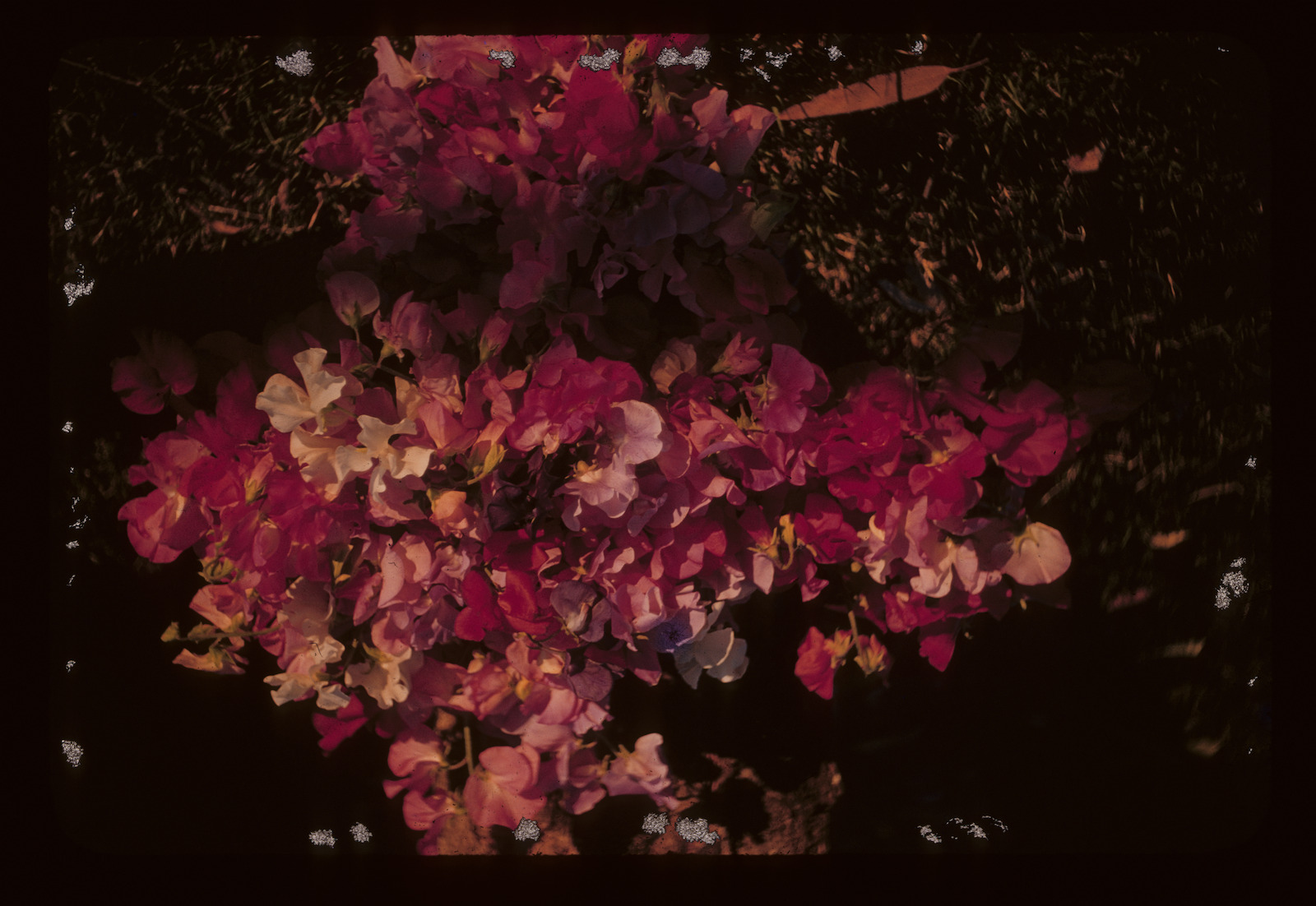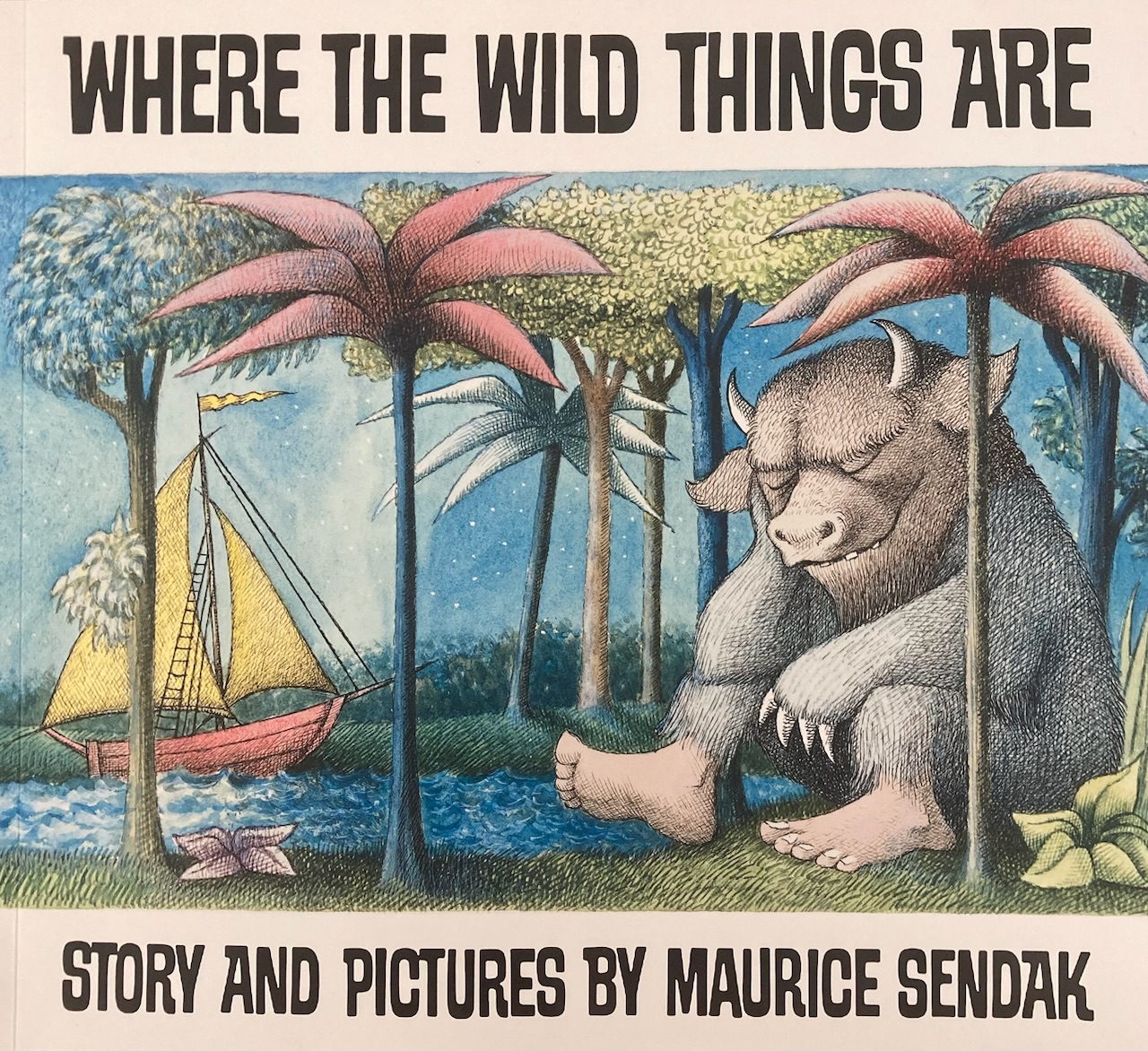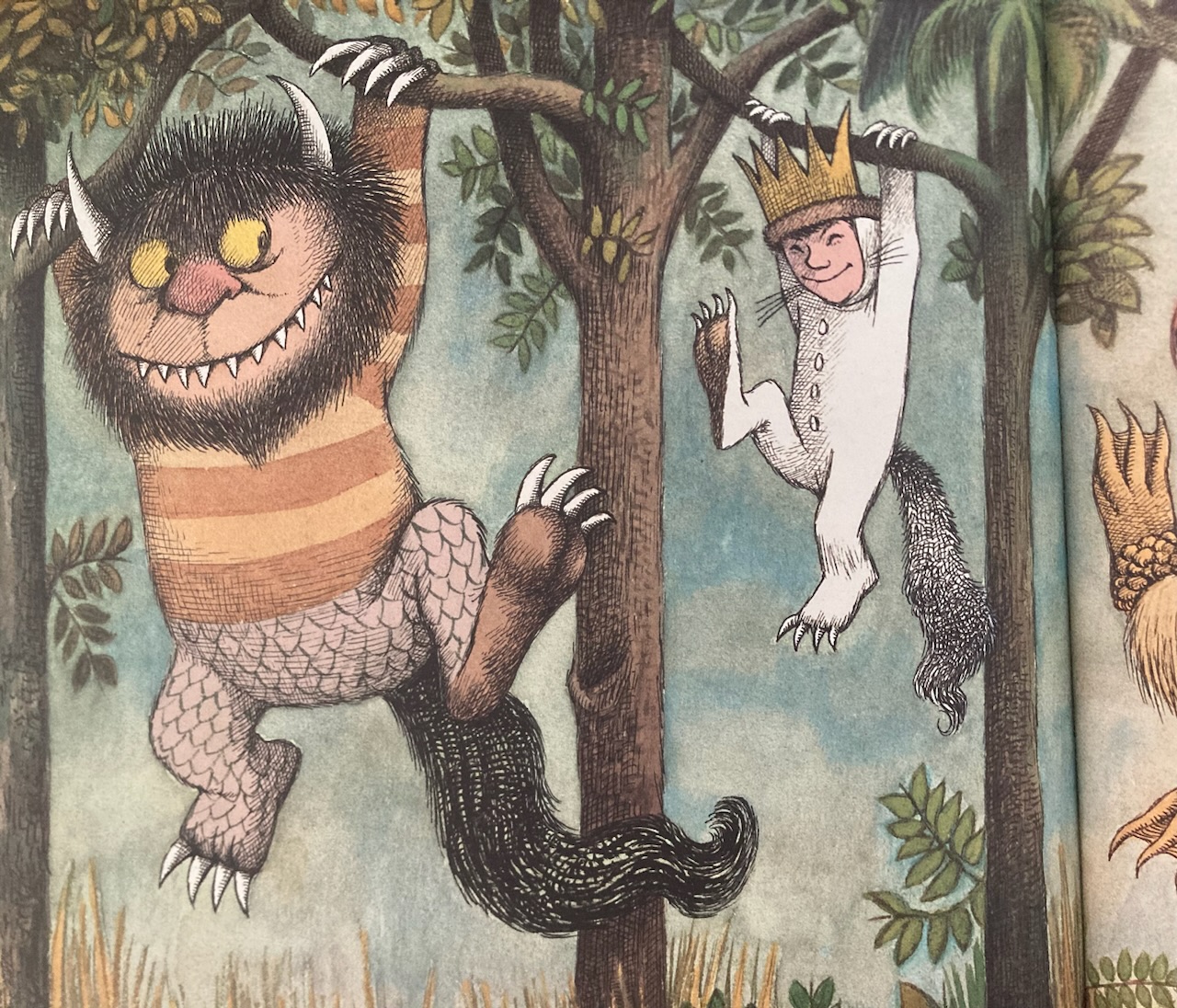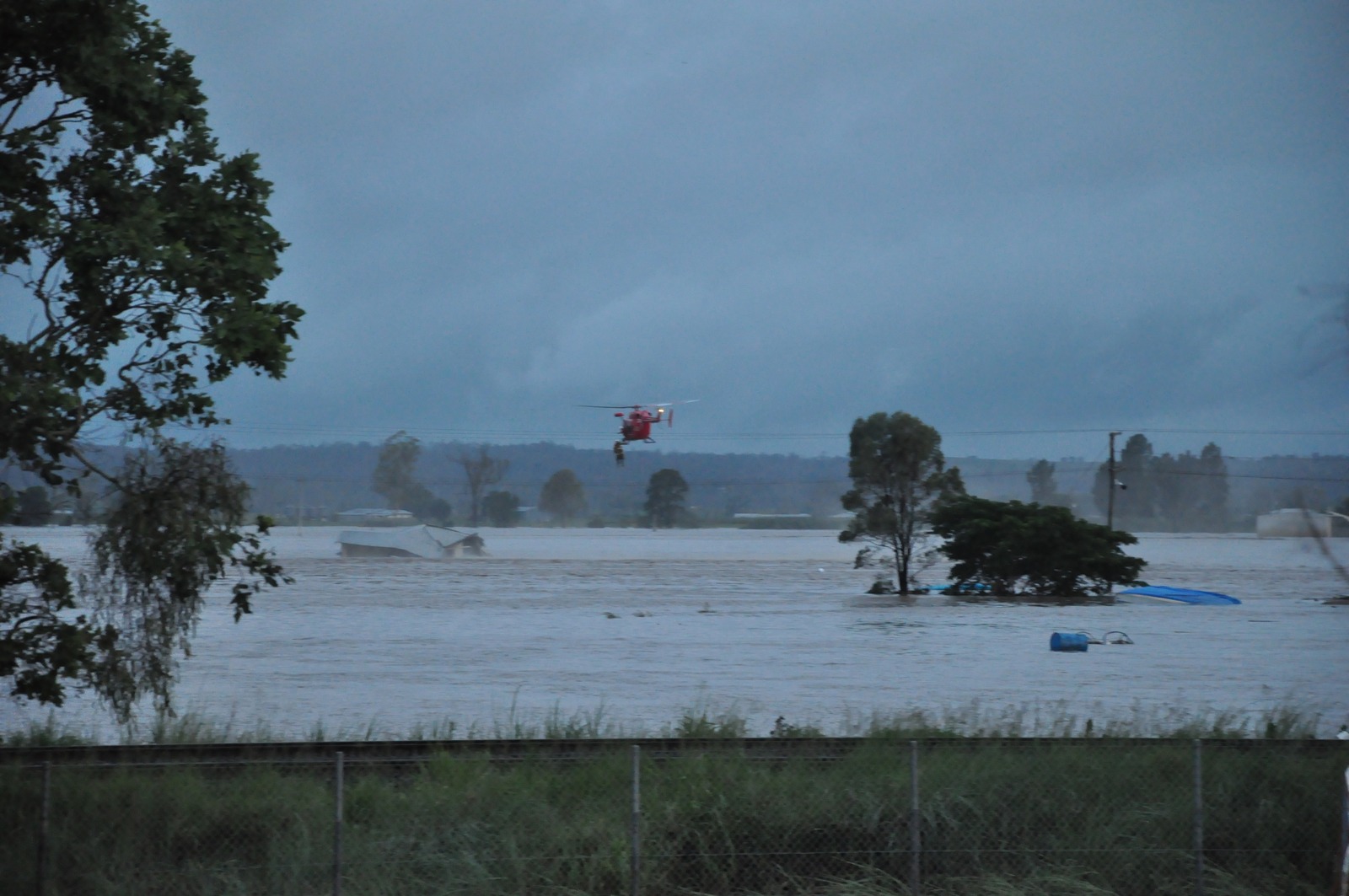Fear
By Guest blogger: Greer Townshend - 2022 Mittelheuser Scholar in Residence | 20 May 2024
Guest blogger: Greer Townshend - 2022 Mittelheuser Scholar in Residence
Emotions, like flowers, usually appear in a cluster. Fear, for example, can be accompanied by hope, panic, dread, worry, anxiety, paranoia and more.[1] It can morph into phobias or become contagious. It can grow from within or be projected onto us. Let’s look at three different versions of fear in the State Library’s Collections.

Pink native flowers, Peel Island. Morgan Gabriel, 2018, Acc 27550, Dr Morgan Gabriel Collection, John Oxley Library, State Library of Queensland. Image number: 27550-0014-0167.
Maurice Sendak’s book Where the Wild Things Are (1963) almost wasn’t published. After first seeing the monstrous creatures, editor Ursula Nordstrom feared parental backlash. She later wrote to Sendak explaining:
‘It’s always the adults that we have to contend with, they sift their reactions through their own adult experiences. As an editor, who stands between the creative artist and the creative child, I am constantly terrified that I will react as a dull adult.’[2]
Nordstrom’s fears of backlash were realised – the book was condemned for being ‘too dark’ and immediately banned in the southern states of America, as well as in libraries nationwide, for supposedly depicting witchcraft and the supernatural. [2] Yet her courage was also rewarded. Where the Wild Things Are is now one of the most beloved children’s books of all time, selling tens of millions of copies in over thirty languages.[3]

Where the Wild Things Are by Maurice Sendak
Sendak himself was never fearful, believing disruptive emotions like fear and anxiety were part of children’s everyday lives, and that it is through fantasy that children achieve catharsis. [5] One young reader even wrote to him asking: ‘How much does it cost to get to Where the Wild Things Are? If it is not too expensive, my sister and I would like to spend the summer there.’[6]

Where the Wild Things Are by Maurice Sendak
Some fear, however, isn’t imagined. The vice-like grip of terror experienced in life-threatening situations is one of few emotions so all-consuming it stands alone, found here in the spine-chilling words of 2011 flood survivor Lisa Spielring: ‘I was at home with three of our children when the water struck.’ [7]
Spielring continues:
‘Within minutes the children noticed that there was a wave coming at us from the west covering the rail line. We had no choice now but to run toward Sandy Creek to the East which we knew was already flooded. People were floating past us on the roofs of cars and houses were tipping over with people screaming for help at the windows. The noise was deafening. I had my youngest daughter IIsa on my back and she kept saying to me, “you won’t let me drown, will you mummy”. [8]

N.S.W. Rural Fire Service helicopter flying over a house swept away during the floods in Grantham. Geoff Purton, 2011, Acc 28510 Amanda Gearing Queensland Flood Collection, John Oxley Library, State Library of Queensland. Image number: 28510-0145-0086.
Fear isn’t always as sharply defined. Sometimes it’s insidious, manmade, and used as a deliberate and political act of control. In Fear: An Alternative History of the World, Robert Peckham suggests that ‘fear’s power lies precisely in its murkiness, ambiguity and durability as an emotion, behaviour, idea and tool’. [9]
In an excerpt from The Whole World is Watching, a short documentary produced to expose racism in Australia and mobilise support for planned protest activities at the 1982 Brisbane Commonwealth Games, Cheryl Buchanan, a Guwamu Nation Elder and lifetime campaigner for social justice, reflects on this version of fear:
Excerpt of interview with Cheryl Buchanan from The Whole World is Watching 1982 Amanda King (director) Bayles, Tiga, 1953- narrator.; Butt, Louise, Videographer.; Gray, Peter, Videographer.; Brisbane, Queensland: Peter Gray; 2019
Watch the full video here.
References
[1] The Book of Human Emotions, Tiffany Watt Smith, Profile Books, LTD, London, 2015, p.106
[2] The Art of Maurice Sendak, Lanes, Selma G. New York: Harry N. Abrams; c1980, p.106
[3] Reading Partners, Hannah Cleveland, September 28, 2015, https://readingpartners.org/blog/five-childrens-books-you-didnt-know-were-banned
[4] The Washington Post Ron Charles ‘Where the Wild Things Are turns 50’, November 2022, 2013 https://www.washingtonpost.com/news/arts-and-entertainment/wp/2013/11/22/where-the-wild-things-are-turns-50
[5]The Art of Maurice Sendak, Lanes, Selma G. New York: Harry N. Abrams; c1980, p.106
[6] Ibid., P.107
[7] Lisa Spielring from Gearing Queensland Flood Collection 28510, Amanda Gearing Queensland Flood Collection, John Oxley Library, State Library of Queensland. 2011-2012, Transcript P.2
[8] Ibid. P.2
[9] Robert Peckham Fear: An Alternative History of the World Profile Books, LTD, London, 2023, p.6
About the author:
Greer Townshend was the 2022 Mittelheuser Scholar in Residence for her project, I Feel You: Discovering Collections Through Emotion.
Read her other blogs
Watch Greer's Research Reveals talk.
Research Reveals 2024 - Morning Session. 23:46 Greer Townsend, Mittelheuser Scholar in Residence. Project: I Feel You: Discovering collections through emotions.
Comments
Your email address will not be published.
We welcome relevant, respectful comments.